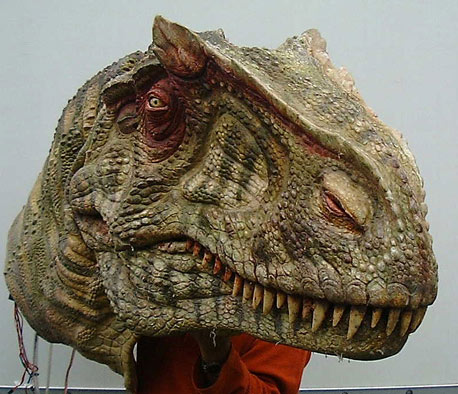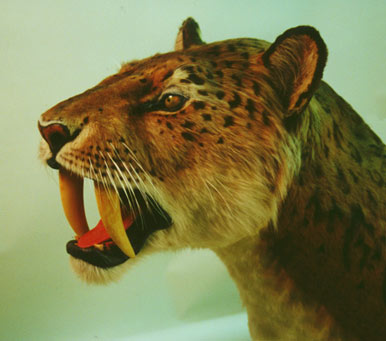The People Behind Prehistoric Animal Animatronics and Puppetry
Crawley Creatures Ltd – Bringing Prehistoric Animals Back to Life
Have you ever wondered how some of the amazing prehistoric animals seen in television programmes and films about prehistoric animals are brought to life on the screen? It’s not all CGI, especially when close up shots are required and the prehistoric animals, be they a Sabre-toothed cat, a huge pterosaur or a fearsome meat-eating dinosaur have to be filmed interacting with their environment.
Team members at Everything Dinosaur, in the course of their work, got the chance to put a few questions to Jez Gibson Harris, the Director of UK based Crawley Creatures Ltd, a company that specialises in producing animatronic creatures, prosthetic make-ups, action props and models for feature films, television programmes and commercials.
Amazing Prehistoric Animals
It was the dedicated team of skilled craftsmen and artists at Crawley Creatures that produced the amazing creatures seen in the ground breaking “Walking with Dinosaurs” television series and the subsequent programmes “Walking with Beasts” as well as specials such as “The Ballard of Big Al”, the story of one particular Allosaurus fragilis close to our hearts as well as “The Giant Claw” and “Sea Monsters”.
The Head of an Allosaurus (for “The Lost World”)

Picture credit: Crawley Creatures
The superb head of the fierce Mesozoic predator Allosaurus (A. fragilis).
To view Crawley Creature’s website: Crawley Creatures Ltd.
With a huge variety of television work, as well as special projects for museums, galleries and other institutions, not to mention nearly 30 feature film credits, the team at Crawley Creatures are very busy people, but Director Jez, took time out of his busy schedule to answer a couple of questions we at Everything Dinosaur asked:
What was the most challenging work you and your team had to do for the “Walking with Dinosaurs” TV series?
“Our greatest challenge is always working against time. For WwD & WwB [Walking with Dinosaurs and Walking with Beasts] we would only have six weeks between location shoots to make a whole host of creatures, animatronic heads of dinosaurs or creature elements for the next episode (for WwD we made just over 80 different items altogether).
Frequently the paint would be wet as the last of the creatures were placed into a huge packing crate with the transport truck waiting outside the workshop to take the shipment to the aircraft.
Logistics were a huge challenge. When we filmed on location there were only a team of eight people and most of the locations were very remote. Each location lasted about four weeks and would provide the footage predominantly for one episode of the series.
Sometimes our creations had to be dropped in by helicopter or crammed into small jet boats to reach the remote locations and then so would we. During a three week filming trip to south Island New Zealand it rained in torrents every day, but when at intervals the rain stopped we filmed like crazy but the continuity of the river we were filming around was hard to match as everyday the river got wider and wider.”
Commenting on the particular difficulties the locations for the six part series “Walking with Dinosaurs”, Director Jez added:
Episode one [New Blood] was shot mostly in French Caledonia, lots of red soil and fantastic primitive trees to represent the Triassic. At the time the French army were doing manoeuvres on the island and the crew kept bumping into tanks and being questioned by the two opposing sides as to whether we had seen the other side and how many tanks etc. we had seen.
Episode six [Death of a Dynasty] was filmed in a fantastic volcano park with active volcanoes and vast black lava and ash fields and a big Araucaria tree (Monkey Puzzle tree) forest in Chile (I thought this was the best location of all and would highly recommend Chile as an exciting place to visit, absolutely stunning!)
Given Crawley Creatures involvement in other prehistoric animal documentaries and programmes, what has been the most difficult animal to model?
For WwDinos I think Ornithocheirus [flying reptile] was the most challenging. This huge pterosaur had a wingspan of up to 10 metres, (33 feet), and our challenge was how to make the head, which was over a metre long, extremely light weight so that it could be puppeteered effectively. The complete model of the pterosaur had to work as a sitting creature in its roosting site and as a stretched out dead creature lying on a beach. Trying to create the realistic looking flexible wing membranes was tricky. But we ended up finding a roll of automotive skin textured leatherette which we used to cast the latex rubber wing membranes onto, which proved to work exceptionally well.
For the third series, Walking with Monsters, we had to make a lystrosaur, a quadruped (a tusked, pig-like creature) and a Proterosuchus a type of hook-nosed early crocodile, the two creatures had to be swimming and the Proterosuchus attacks the lystrosaur in the water, this was filmed in a lake in the Canary Islands and involved the lystrosaur being on a track and co-ordinating a team of people puppeteering the movements whilst underwater. The end result worked very well.
The Beautiful Head of A Smilodon (Walking with Beasts)
Picture credit: Crawley Creatures
If Crawley Creatures Ltd were given a free hand, what animal from the fossil record would you like to make a model of?
I guess it would have to be a full-sized Tyrannosaurus rex, every-ones favourite. We have made a head before, but the full-sized beast would be fabulous!
Finally, what other projects are you working on?
“At the moment we are working on a large project for a new museum, currently under construction in Athens, Greece, for which we are making about 60 items. These range from large Carboniferous insects and trees to small Jurassic pterosaurs to huge dinosaurs. We are currently in the early stages of working on a full-sized 16 metre long Apatosaurus and a 10 metre Allosaurus which is very exciting.”
We wish Director Jez and his team every success with this project and all the very best for the future.


